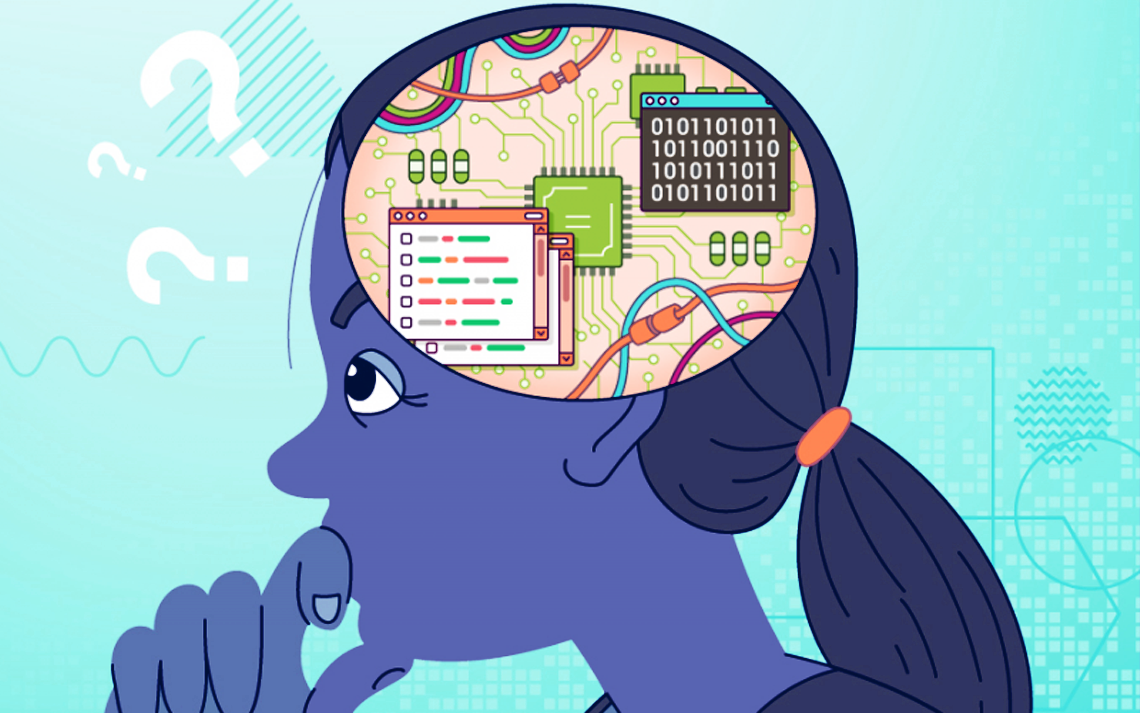Think Like a Computer: Cracking the Code of Algorithms & Computational Thinking

Algorithms and computational thinking are tools for any problem-solver who wants to make sense of the world.
The Dive
Let’s say you want to bake a cake. You don’t just throw everything into a bowl and hope for the best—unless you like cake soup. You follow a series of steps: preheat the oven, mix the ingredients, pour the batter, set the timer, and bake. That’s an algorithm. It’s a step-by-step solution designed to get a specific result. And believe it or not, that same logic powers everything from your favorite video games to how your GPS finds the fastest route.
Algorithms are all around us. When you follow a recipe, solve a math problem, or give a friend directions to your house, you’re already using them. In computer science, algorithms are written as code to give computers clear instructions—but humans use them all the time too. You don’t need to be a coder to think like one.
Before we can write a strong algorithm, we need to understand the problem we’re trying to solve, and that’s where computational thinking comes in. It’s not about being a robot. It’s about thinking logically and creatively at the same time. Computational thinking is how we tackle big, complicated problems by breaking them down into smaller, manageable steps. It’s what lets us see the big picture and still focus on the details.
Here’s how it works: First, we break a big challenge into smaller parts. This makes things easier to understand and less overwhelming. Once the pieces are separated, we start looking for similarities and patterns. Have we seen something like this before? Can we reuse a solution? Then we zoom in on what actually matters—ignoring anything that’s just extra noise or distraction. Finally, we come up with a plan: a clear set of instructions that solve the problem step-by-step.
This process isn’t just for writing code. Artists use it when sketching out a mural. Scientists use it to design experiments. Even athletes use it when figuring out how to improve their performance. Anytime you take something complicated and figure out how to make it work better, you’re using computational thinking.
And the best part? You can practice it anywhere. Organizing your backpack, figuring out how to clean your room faster, building a LEGO fortress, or creating your own card game, all of these are chances to think like a computer scientist. You’re solving problems with logic, creativity, and clarity. That’s the power of algorithms. That’s computational thinking. And once you learn how to use it, there’s not much you can’t figure out.
Why It Matters
Computational thinking teaches you how to tackle big problems by thinking like a coder—logical, creative, and unafraid of a challenge. Whether you're learning to program, writing a story, or organizing a school project, these skills help you break down the chaos and build something amazing. Algorithms aren’t just the future—they’re your secret weapon for making sense of it.
?
What algorithms do you use in your daily routine?
How would you explain computational thinking to a friend?
Can you think of a time when breaking a problem into smaller pieces helped you solve it?
How might an artist or musician use computational thinking?
Why do you think computers need exact instructions?
How could you design a simple algorithm for tying your shoes?
What parts of a complex school project might benefit from pattern recognition?
What’s the difference between an algorithm and a guess?
Dig Deeper
A fun, student-friendly introduction to the power of computational thinking in real life.
This animated TED-Ed video breaks down the meaning of an algorithm using clever examples.
Watch how a computer scientist explains algorithms to a child, teen, college student, grad student, and expert.
Related

Build the Future: Exploring Robotics Engineering
Robots aren’t just science fiction—they’re science in action. Robotics engineering combines creativity, coding, mechanics, and problem-solving to build machines that help us explore, create, and care.

So You Want to Be an Entrepreneur?
Entrepreneurship isn't just a buzzword—it's a mindset. It’s not about having a job, it’s about solving problems, selling your ideas, and learning from every mistake.

Healthy vs. Unhealthy Conflict
Conflict is part of life—but how we handle it makes all the difference. Learn how to spot the signs of healthy vs. unhealthy conflict and how respectful disagreement can actually make relationships stronger.
Further Reading
Stay curious!

